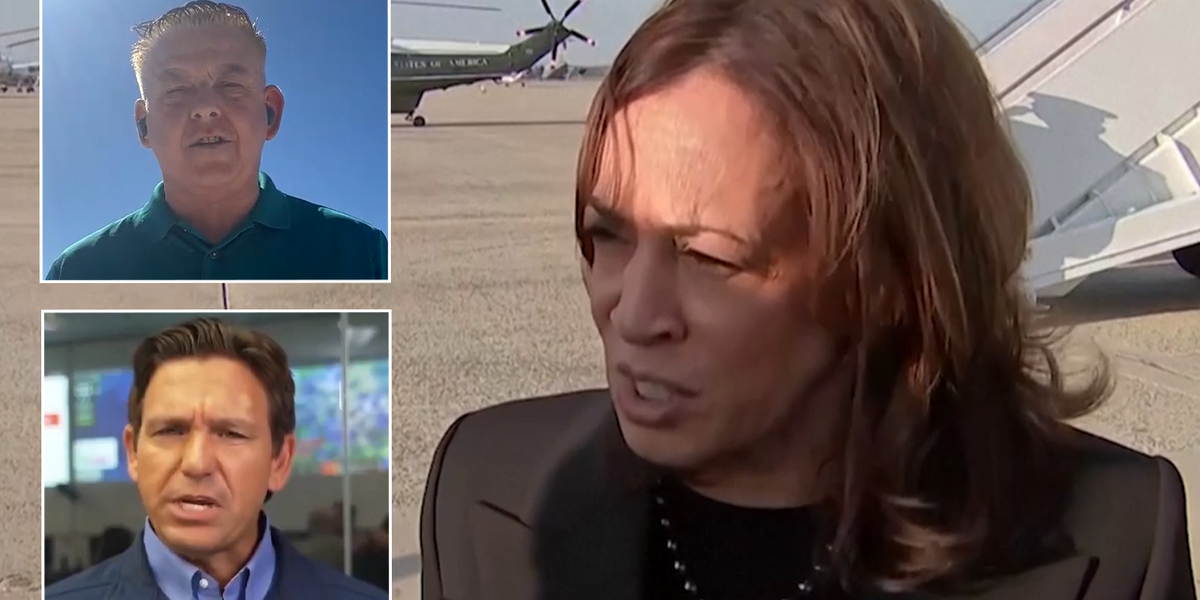Criticism of Kamala Harris’s Response to Hurricane Milton: A Media Ambush Gone Awry
As Hurricane Milton made landfall in Florida as a Category 3 storm, the political landscape surrounding disaster response became a focal point of scrutiny. Neil McCabe, a commentator on GBN America, did not hold back in his criticism of Vice President Kamala Harris’s handling of the situation, particularly her attempt to reach out to Florida Governor Ron DeSantis. McCabe characterized her actions as a "planned media ambush" that "absolutely blew up in her face," raising questions about her effectiveness in operational disaster relief.
The Context of Harris’s Outreach
McCabe pointed out that Harris had not communicated with DeSantis regarding any emergencies for three years, which raises significant questions about her role and relevance in disaster management. This lack of communication suggests a disconnect between the federal and state levels during critical times, undermining the collaborative spirit often necessary for effective disaster response. Furthermore, both DeSantis and President Biden publicly praised their working relationship during the crisis, further diminishing the impact of Harris’s outreach.
A Troubling Briefing
The criticism of Harris intensified following an awkward moment during a Hurricane Milton briefing. Reports from the Daily Mail UK highlighted a moment where she was heard saying, "It’s a live broadcast," before posing a question. This led to accusations that she was being fed lines by aides, raising concerns about her preparedness and authenticity in handling such a significant crisis. Critics on social media quickly labeled her a "total fraud" and "incompetent," reflecting a growing unease about her leadership capabilities during emergencies.
Contrasting Leadership Styles
The contrasting approaches of former President Donald Trump and Vice President Kamala Harris during Hurricane Milton have also drawn attention. While Trump offered prayers for those affected by the storm, he continued his campaign rallies in Pennsylvania, maintaining a visible presence on the campaign trail. In contrast, Harris attended a White House briefing on the storm before embarking on a Western campaign swing, indicating a strategic focus on key swing states. Trump is targeting blue-collar voters in Michigan, while Harris is aiming to connect with Hispanic voters in Nevada and Arizona.
These differing tactics reflect the tight race expected in the upcoming November election, with both candidates keenly aware of the importance of their public image during crises. Harris’s approach, however, has been marred by her recent gaffe, which may impact her perceived readiness to lead during times of national emergency.
Environmental Concerns Amidst the Storm
As Hurricane Milton battered Florida’s Gulf Coast, environmentalists raised alarms about potential ecological hazards. Reports from Le Monde indicated that the storm’s path could disturb over 1 billion tons of slightly radioactive phosphogypsum waste stored in "stacks" near phosphate mines and fertilizer processing plants. These vulnerable sites, located close to major waterways, pose a significant risk during severe storms. Ragan Whitlock, a staff attorney at the Center for Biological Diversity, warned that these sites are "ticking time bombs," with the potential for pollutants to scatter across the peninsula and into waterways, raising fears of long-term environmental damage.
Conclusion
The unfolding narrative surrounding Hurricane Milton has not only highlighted the immediate challenges of disaster response but also the political ramifications of leadership during crises. Neil McCabe’s pointed criticism of Vice President Kamala Harris’s actions underscores the complexities of federal-state relations in emergency management. As the storm continues to impact Florida, the contrasting strategies of political leaders will likely shape public perception and influence the upcoming election. With environmental concerns looming large, the stakes are high for both the affected communities and the leaders tasked with guiding them through recovery.
